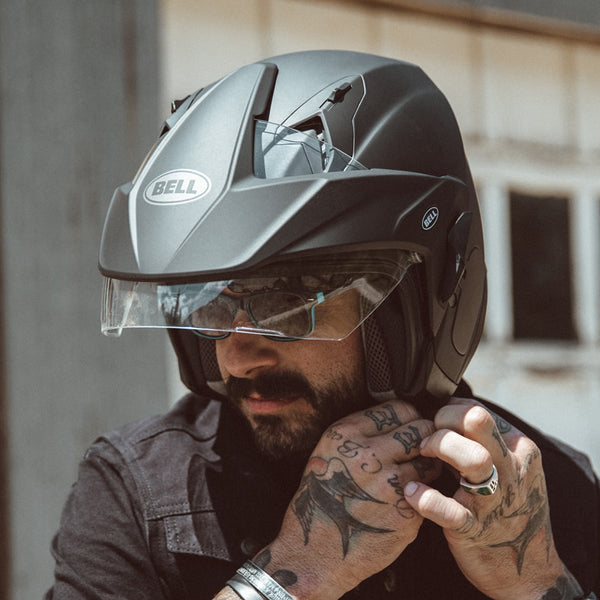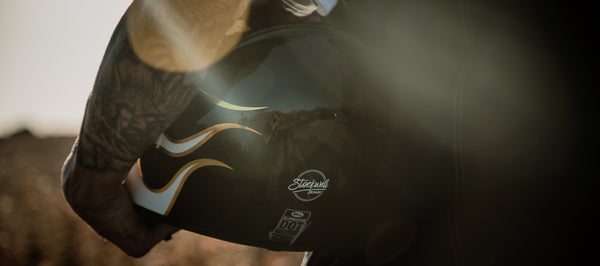
A must know about Motorcycle Helmets
Everything You Need to Know About Motorcycle Helmets
Are you ready to hit the open road on your motorcycle adventure? Before you rev up your engine, let's talk about the most crucial piece of gear you'll need: motorcycle helmets. In this comprehensive guide, we'll dive into everything you need to know about motorcycle helmets to ensure your safety and style on every ride.
Understanding the Importance of Motorcycle Helmets
When it comes to motorcycle safety, nothing is more important than protecting your head. Motorcycle helmets are designed to absorb impact and reduce the risk of head injuries in the event of an accident. According to studies, wearing a helmet can significantly reduce the risk of head injury by up to 70%.
Choosing the Right Motorcycle Helmet
With so many options available, choosing the right motorcycle helmet can seem overwhelming. However, it doesn't have to be. When selecting a helmet, consider factors such as fit, style, and safety features. Make sure the helmet fits snugly and comfortably, and opt for one that meets or exceeds safety standards such as DOT or ECE. Also, ventilation is essential for airflow, especially on hot days, to prevent overheating and discomfort during long rides. Visors come in various tints and styles, offering protection from glare and debris while enhancing visibility. Additionally, helmets with advanced padding materials, like EPS foam, provide superior impact absorption, reducing the risk of head injuries in the event of a crash. Investing in a high-quality helmet tailored to your needs is an investment in your safety and riding enjoyment.
Types of Motorcycle Helmets

There are several types of motorcycle helmets to choose from, each offering its own set of features and benefits. These include:
- Full-face helmets: Offering the most protection, full-face helmets cover the entire head and face, providing maximum coverage and safety.
- Open-face helmets: Also known as three-quarter helmets, open-face helmets cover the head but leave the face exposed. They offer a balance of protection and visibility.
- Half helmets: As the name suggests, half helmets cover only half of the head, leaving the face entirely exposed. While they offer minimal protection, they are popular among riders looking for a lightweight and minimalistic option.
The Importance of Helmet Safety Standards
When shopping for a motorcycle helmet, it's essential to look for safety certifications such as DOT, ECE, or Snell. These standards ensure that the helmet has undergone rigorous testing and meets minimum safety requirements. Additionally, be sure to replace your helmet every five years or after any significant impact to ensure optimal protection.
Exploring Top Motorcycle Helmet Brands
There are numerous motorcycle helmet brands on the market, each offering its own unique designs and features. Some popular brands include:
- Troy Lee Designs: Troy Lee Designs helmets are renowned for their distinctive style and high-performance features. With bold graphics and innovative designs, Troy Lee Designs helmets stand out on the track or trail. Engineered for durability and comfort, they offer riders superior protection without sacrificing style or functionality.
- Bell helmets: With a history dating back to the 1950s, Bell helmets are synonymous with quality and reliability. Trusted by riders worldwide, Bell's helmets combine cutting-edge technology with sleek design. From classic retro styles to modern racing helmets, Bell Helmets offers a wide range of options to suit every rider's needs and preferences.
- Fox Racing: Fox Racing helmets embody the spirit of performance and style. Designed for riders who demand excellence, Fox helmets feature advanced materials and aerodynamic profiles for optimal protection and comfort. With striking graphics and rugged construction, Fox Racing helmets are the choice of champions on and off the track.
Finding the Perfect Fit
A properly fitting helmet is crucial for both safety and comfort. To find the perfect fit, measure the circumference of your head and refer to the manufacturer's sizing chart. Additionally, try on the helmet and adjust the straps and padding as needed to ensure a snug and secure fit.

Start by measuring your head circumference with a flexible tape measure. Use this measurement as a guide when selecting helmet sizes, but remember that sizes can vary between brands and models.
When trying on helmets, pay attention to how snugly it fits around your head. It should feel snug but not uncomfortable, with no pressure points. Ensure the helmet sits level on your head, covering the top of your forehead without obstructing your vision.
Check the cheek pads to ensure they provide a firm but comfortable fit. They should press against your cheeks without causing discomfort or restricting movement.
The helmet's retention system, typically a chin strap, should securely fasten under your chin without pinching or rubbing. You should be able to open your mouth comfortably while wearing the helmet without it shifting or coming loose.
Maintaining Your Motorcycle Helmet
Once you've found the perfect motorcycle helmet, it's essential to maintain it properly to ensure its longevity and effectiveness. Regularly inspect your helmet for any signs of wear or damage, and clean it according to the manufacturer's instructions. Avoid storing your helmet in direct sunlight or extreme temperatures, as this can degrade the materials over time.
Maintaining your motorcycle helmet is essential for ensuring its longevity, performance, and, most importantly, your safety on the road. Regular maintenance helps preserve the integrity of the helmet's materials and ensures that it continues to provide adequate protection.
Firstly, it's crucial to keep your helmet clean. Use a mild soap and water solution to gently clean the exterior shell, visor, and interior padding. Avoid harsh chemicals or abrasive materials that could damage the helmet's surface.
Inspect your helmet regularly for any signs of wear and tear, such as cracks, dents, or loose padding. Pay close attention to the helmet's retention system to ensure it functions correctly and securely fastens under the chin.
Additionally, store your helmet properly when not in use. Avoid exposing it to direct sunlight or extreme temperatures, as these can degrade the materials over time. Use a helmet bag or dedicated storage space to protect it from dust and debris.
Finally, follow the manufacturer's guidelines for replacing your helmet. Over time, the materials may degrade, compromising its effectiveness in the event of a crash. Most manufacturers recommend replacing your helmet every five years, even if it appears to be in good condition.
By following these maintenance tips, you can prolong the life of your motorcycle helmet and ensure that it continues to provide reliable protection every time you ride.
Investing in Your Safety
While motorcycle helmets may represent an initial investment, they are a small price to pay for the invaluable protection they provide. Remember, your helmet is your most important piece of safety equipment, so don't skimp on quality or compromise on fit. Investing in a high-quality helmet from a reputable brand like Moto helmets, Bell helmets, or Fasthouse helmets is an investment in your safety and peace of mind on every ride.
